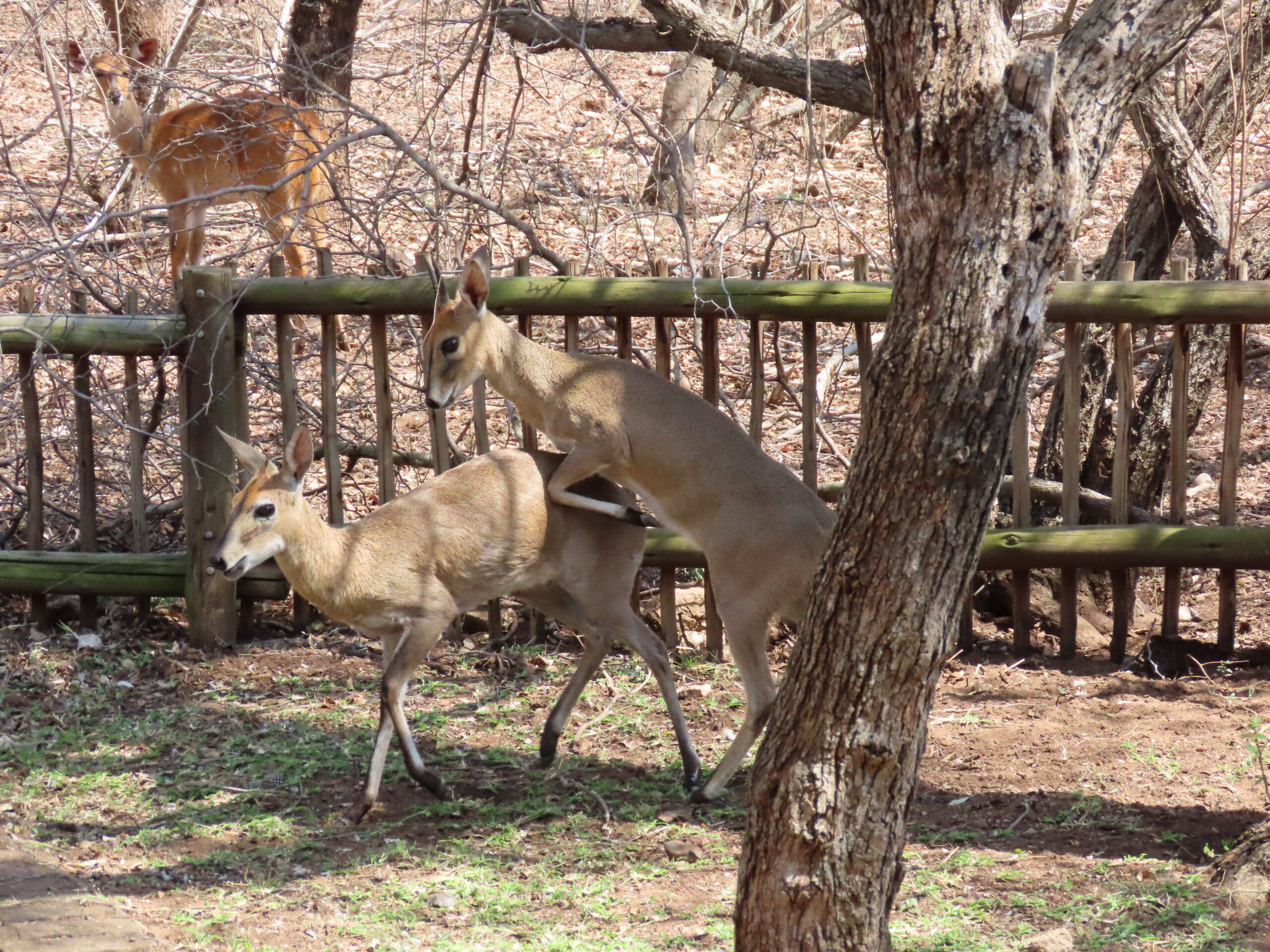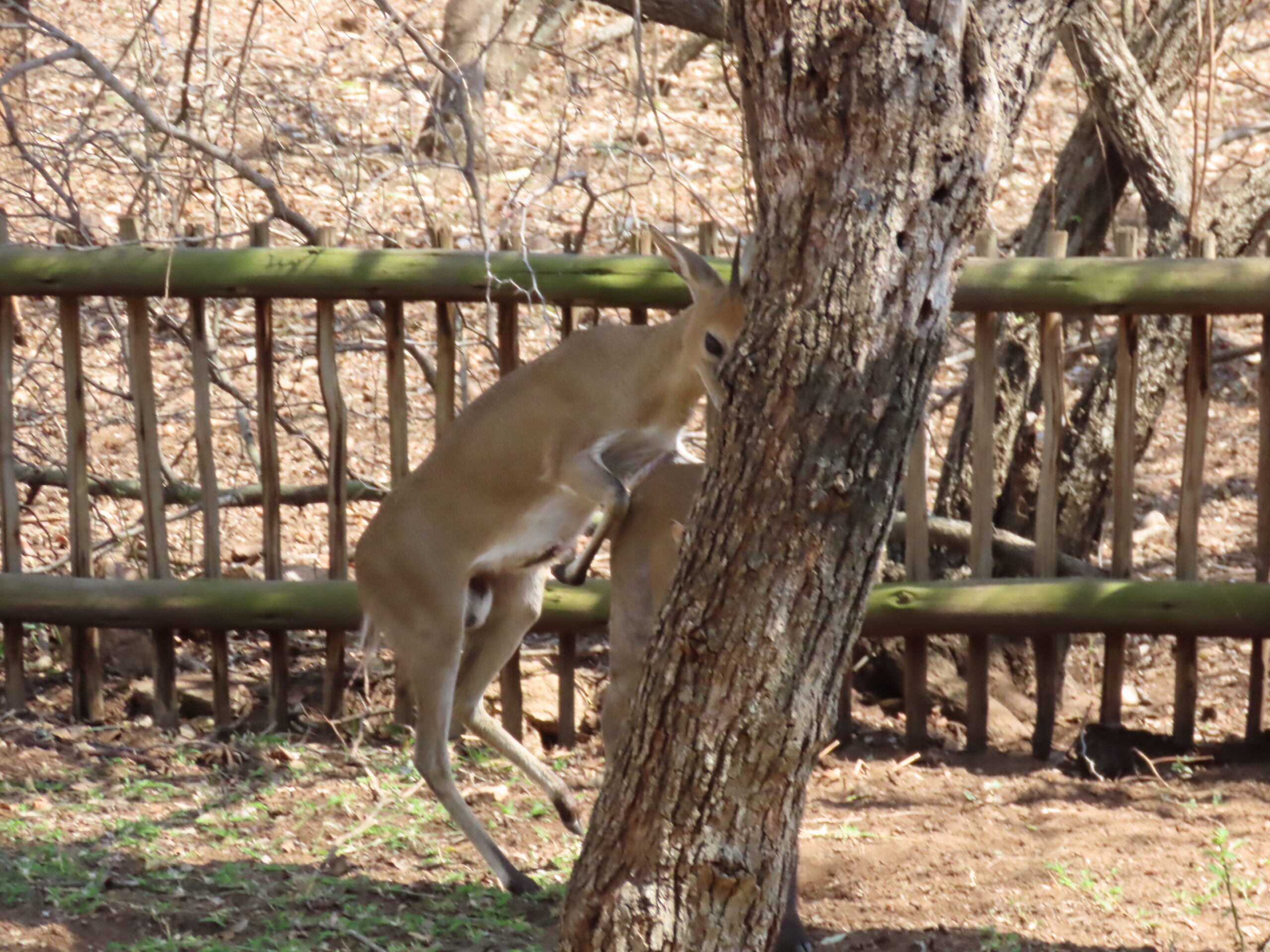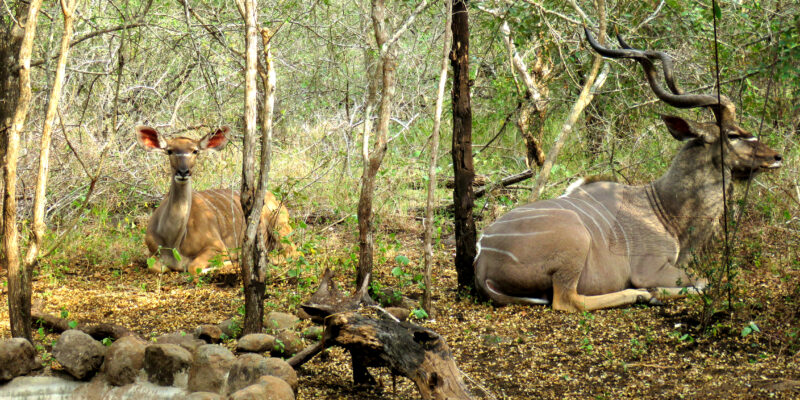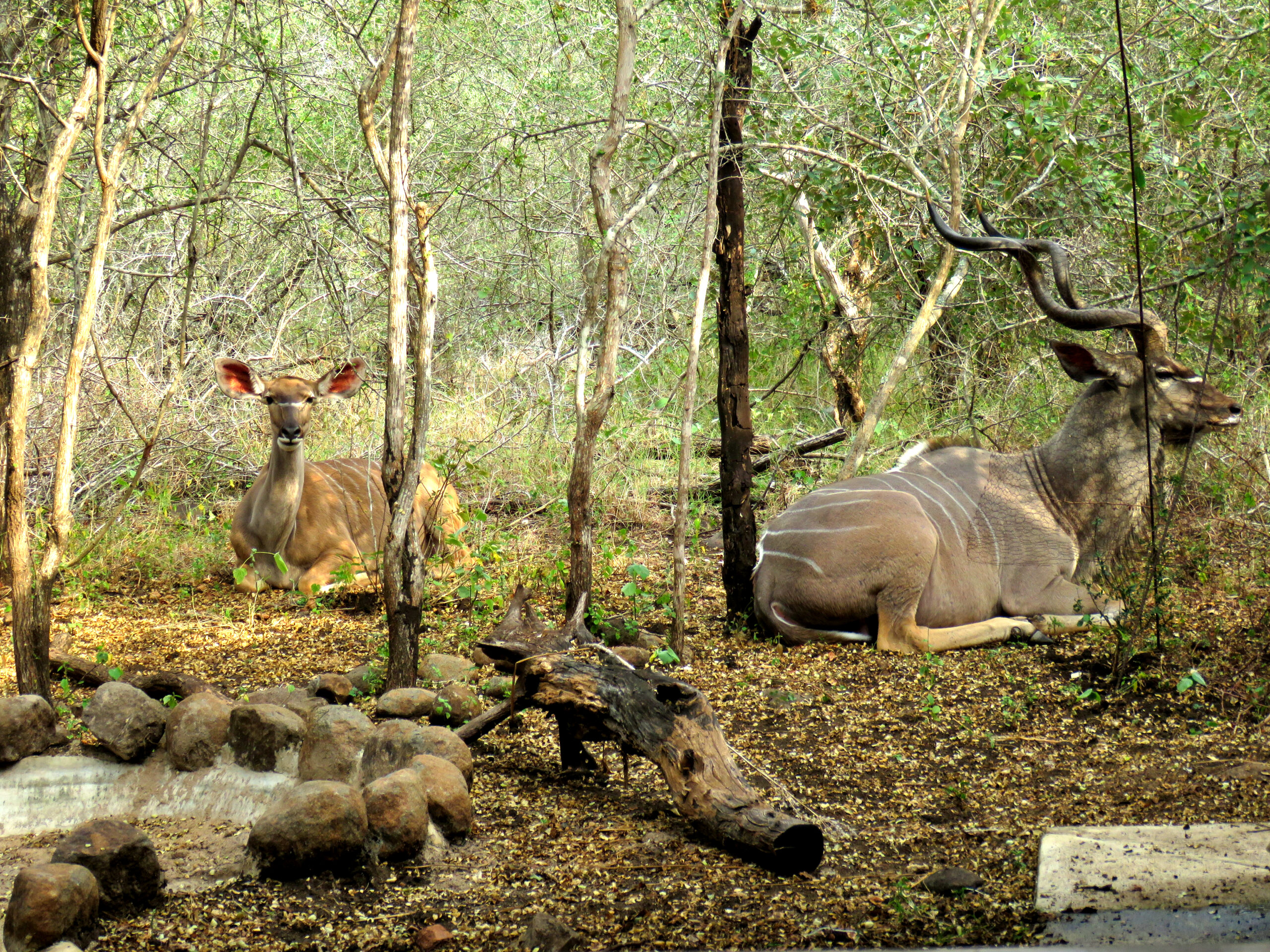
We feel privileged to witness the cycle of life in the bush while sitting on our veranda, day after day. We watch all aspects with a sense of awe and wonder over the relationships of wildlife right before our eyes. Most of the wildlife are loving to their mates and exhibit gentle behavior. We find a great joy to behold.

Even resident warthog Lollie, with two “boyfriends,” Reuben and Busybody, shows loving interest when either of them is here. The tricky part is when both males are here simultaneously, during which they often get into a scuffle. Rueben is more aggressive and often chases Busybody away.

Gosh, it’s fascinating to witness all of this exquisite animal behavior. Hours pass in a blur when we’re watching the wonders in the garden, day after day. No wonder we have little interest in going out when the “show” is right here, before our eyes.

Here’s some information about the breeding habits of bushbucks.
From this site:
“Common Duiker Breeding
After a gestation period of about six months, the females gives birth to one young weighing about 175 g, and very seldomly gives birth to twins. Before giving birth, the female will hide in dense vegetation. The young are well-developed at birth and can run within their first 24 hours, yet the mother hides them at first. Females give birth once a year, and first mate at the age of 8 – 9 months, only being fully grown at 7 months. Having no specific breeding period, duikers give birth at any time of year with a possible peak during the summer months. According to habitat and locality, their mating systems vary from monogamous pairs to males with more than one female.”

From this site:
Mating Habits
These animals form monogamous breeding pairs. This means that one male mates and lives only with one female. No evidence for a peak breeding period has been found. Females are known to produce young at any time of the year, with gestation probably lasting 4-7 months. A female will seek out very secluded and thick cover for the birth. Normally one young is born, though sometimes there are two. Newborns are well developed when born and are able to run within a period of twenty-four hours. Both parents look after them. Young are weaned at 2 months of age and reach adult size in 6 months. Females attain reproductive maturity at 8-9 months and males at 12 months of age.

Ewes reach sexual maturity at 14 months. Even though rams reach sexual maturity at 11 months they generally do not mate until socially adept at the age of three years.”
This morning Tom was up and about at 5:00 am and did two loads of laundry while I stayed in bed, wide awake but still too sluggish to get up. These drugs I’m taking for the head and face pain knock me for a loop for about 12 hours. I started taking the 25 mg dose at 9:00 pm, 2100 hrs., and today, I awoke with no pain for the first time.

I don’t know how long that will last since it’s been coming and going over the past few days since I upped the dose. I am finally very hopeful—perfect timing with our friends arriving tomorrow. I still feel sleepy during the day and will lie down for a few minutes when I have time. According to the literature, the drowsy side effect will diminish over time.

We were concerned about our houseguest suffering on the hot nights when there were 2½ hours of load shedding during the night. There are no inverters in those two units, and it can be hot at night on 100F and 38C days. When we expressed our concerns to Louise, within hours, she and Danie made the long drive to Nelspruit to purchase three chargeable fans, one for each of the two flats where our friends will stay and one for us to use while sitting outdoors when the temperatures rise very soon.
Here’s a photo taken of one of the fans, which are all charging right now since load shedding ended a few minutes ago:

Louise pays all the utilities, but we are very mindful about using electricity, especially for the air con unit in the bedroom. Now when it’s outrageously hot during the day, instead of going into the bedroom and turning on the air con, we can sit in front of the quiet rechargeable fan. We appreciate the fans for our guests and us. She never misses a beat on satisfying the needs of her guests. She and Danie are both fantastic!
Now, I have to return to work in the kitchen making 24 regular (non keto) blueberry muffins and two pans of mushroom, onion, cheese, and crustless sausage quiche, a pan for each of us for breakfast over the next few weeks while our guests are here. For freshness, we’ll freeze individual portion sizes to keep in the freezer at both houses.
I will post again tomorrow since we don’t expect our guests to arrive until the afternoon. I’ll go back and forth, making the dinner for tomorrow night and working on the post, getting everything prepped by the time they arrive.
Tonight? Jabula with Rita and Gerhard!
Be well.
Photo from one year ago today, September 16, 2021:













































